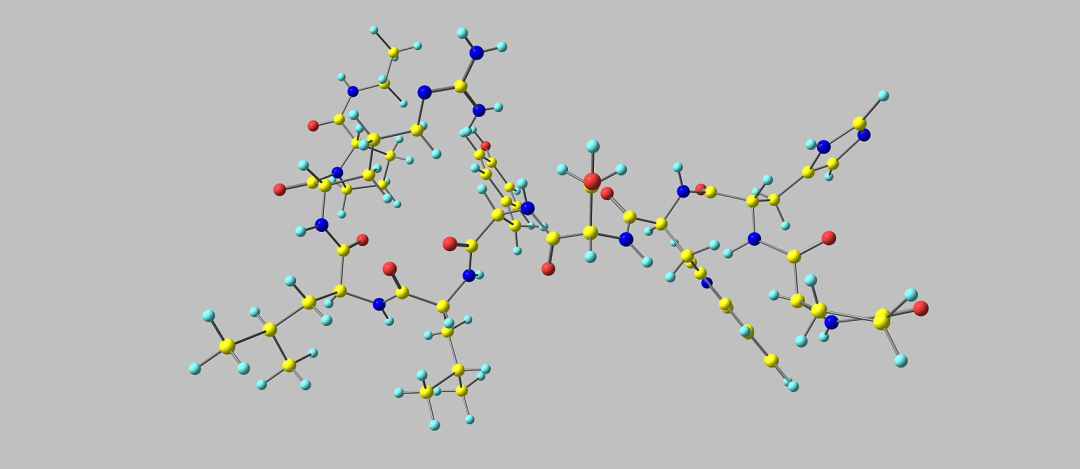Synthesis and cleavage of solid phase peptides
Peptides are chemical substances composed of amino acids, which are commonly found in living organisms. Up to now, tens of thousands of peptides have been found in living organisms, which have a wide range of biological activities and good safety. In 1963, Merrifield proposed a solid phase peptide synthesis method, which opened up a broad world for peptide research, and greatly promoted the development of molecular biology and other fields, for which Merrifield was awarded the Nobel Prize in Chemistry in 1984. After the 1990s, with the maturity of peptide synthesis technology, more and more active peptides have been developed and widely used in medicine, food, cosmetics, agriculture and animal husbandry and other fields, and solid phase peptide synthesis has also been widely used. The synthesis and cleavage of peptides in solid phase are described in this paper.

Solid phase peptide synthesis
1. Feeding: Add resin to solid phase synthesizer, add DCM to swell, drain and add DMF to wash,
Drain after washing and set aside.
2. Condensation: Dissolve the amino acid with a certain volume of DMF, add the shrinkage agent and activate it into the solid phase
Synthesizer, supplement DMF to reaction concentration, stirring reaction.
3. Removal of protective group: Kaiser reagent was used to detect the degree of reaction, the solvent was drained after the reaction, DMF was washed, PIP/DMF solution was added to remove the protective group, Kaiser reagent was used to detect the degree of reaction, the solvent was drained after the reaction, DMF was washed, and the next amino acid was ready to be added.
4. Condensation cycle: The amino acids are connected according to the resin sequence, and the condensation cycle operation is carried out according to the steps of "de-protection - washing - an activated amino acid - feeding condensation - washing", and the condensation of the remaining n amino acids is completed according to the amino acid sequence.
5. Discharge: After the synthesis, use IPA and DCM to cross-wash the resin, complete the shrinkage of the resin, and discharge the material to the stainless steel tray.
6. Resin drying: The resin is dried at room temperature in a vacuum drying oven, weighed after drying, and the yield is calculated.
7. Organic waste liquid recovery, centralized treatment.
8. Clearance: After the end of the operation, the operator clears the site in time.
Resin cracking
1. Mixing liquid: Prepare the cracking liquid according to the proportion of cracking liquid composition, and put it in the freezer for storage.
2. Feed: Add the peptide resin into the reaction kettle, add the pre-cooled cracking solution, stir the reaction.
3. Discharge: After cracking, the reaction liquid is released, the resin is removed by pumping and filtration and washed with TFA.
4. Concentration: The cracking liquid is transferred to the rotary evaporator at room temperature and concentrated to a small volume.
5. Precipitation: The concentrated reaction liquid is poured into the pre-cooled methyl tert-butyl ether (referred to as ether), stirring to precipitate a large number of solids.
6. Centrifugation: centrifugation of turbid liquid and washing with pre-cooled ether.
7. Drying of crude peptide: Transfer the finished crude peptide to vacuum drying oven at room temperature for drying.
8. Organic waste liquid recovery, centralized treatment.
9. Clearance: After the end of the operation, the operator clears the site in time.
In the actual custom peptide synthesis process, the crude peptides after cracking need to be purified, concentrated, filtered, freeze-dried and other processes, which will not be detailed in this paper. At present, the synthesis process of shorter peptide chains has been relatively mature, but for proteins with larger molecular weight and longer peptide chains, solid phase synthesis technology still has certain limitations, and there are problems such as high cost and accompanying side reactions. Therefore, on the basis of solid phase synthesis of peptides, it is still necessary to find a new way.
Copyright © 2020 Omizzur Inc | Terms & Conditions | Privacy Notice | Sitemap